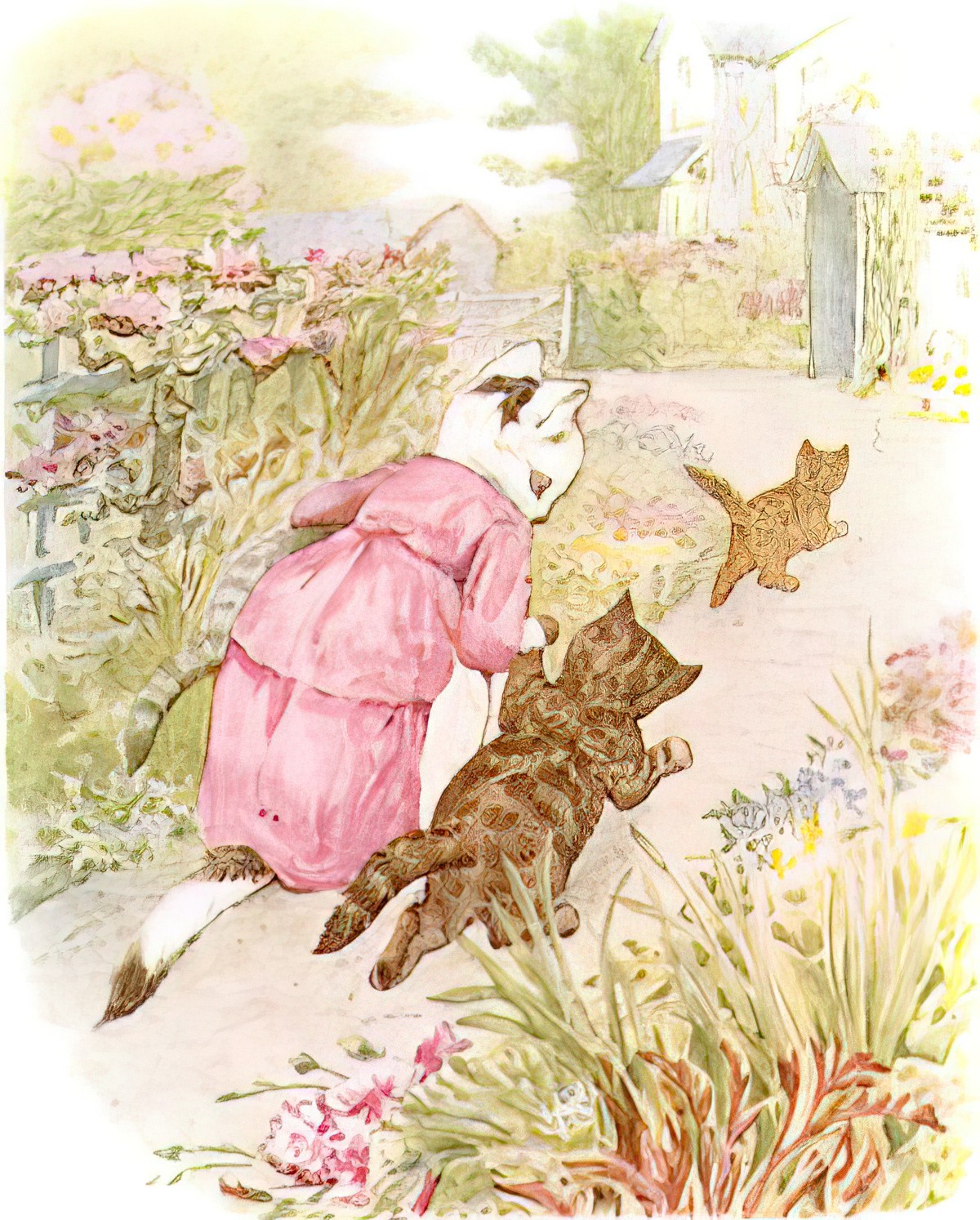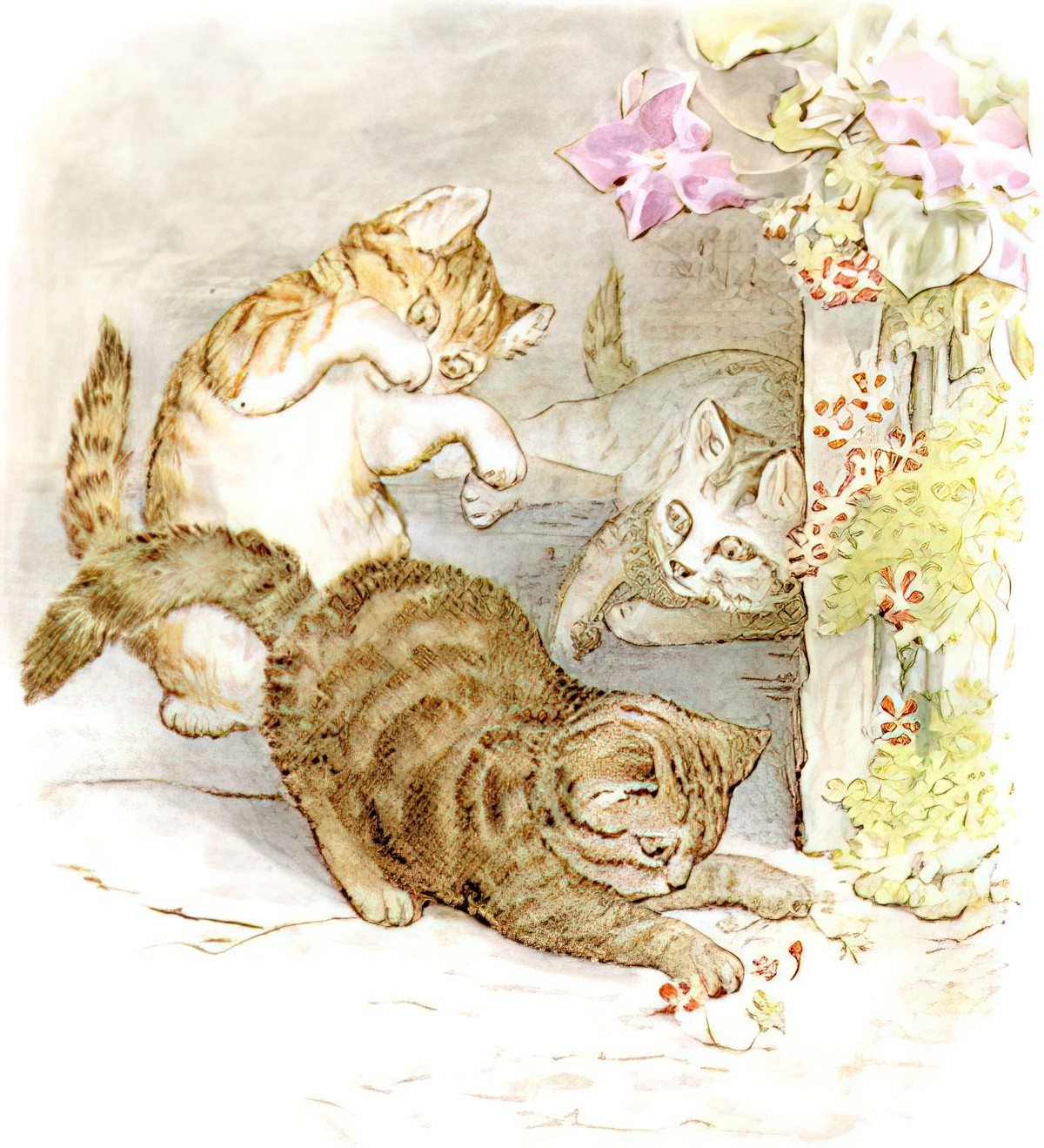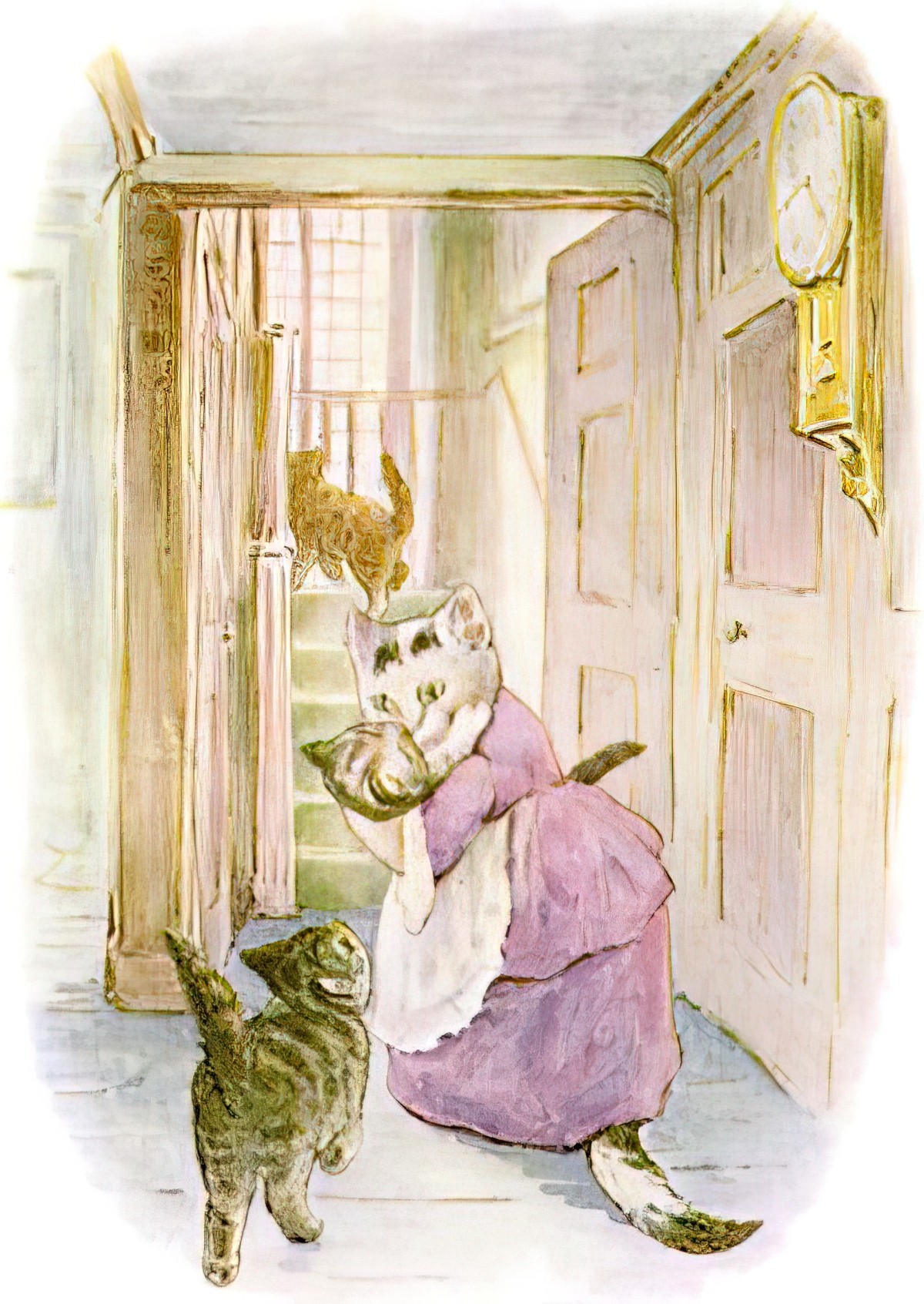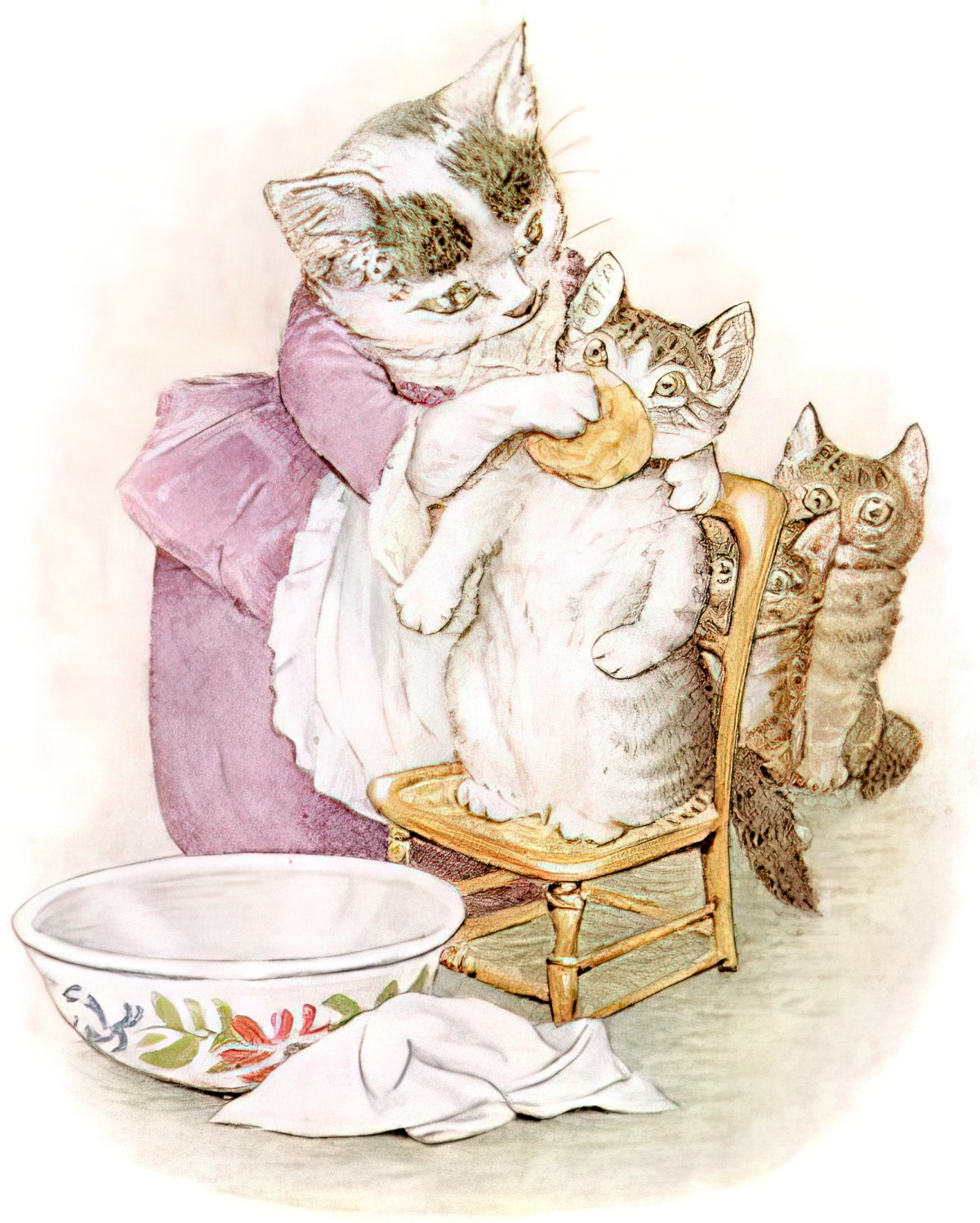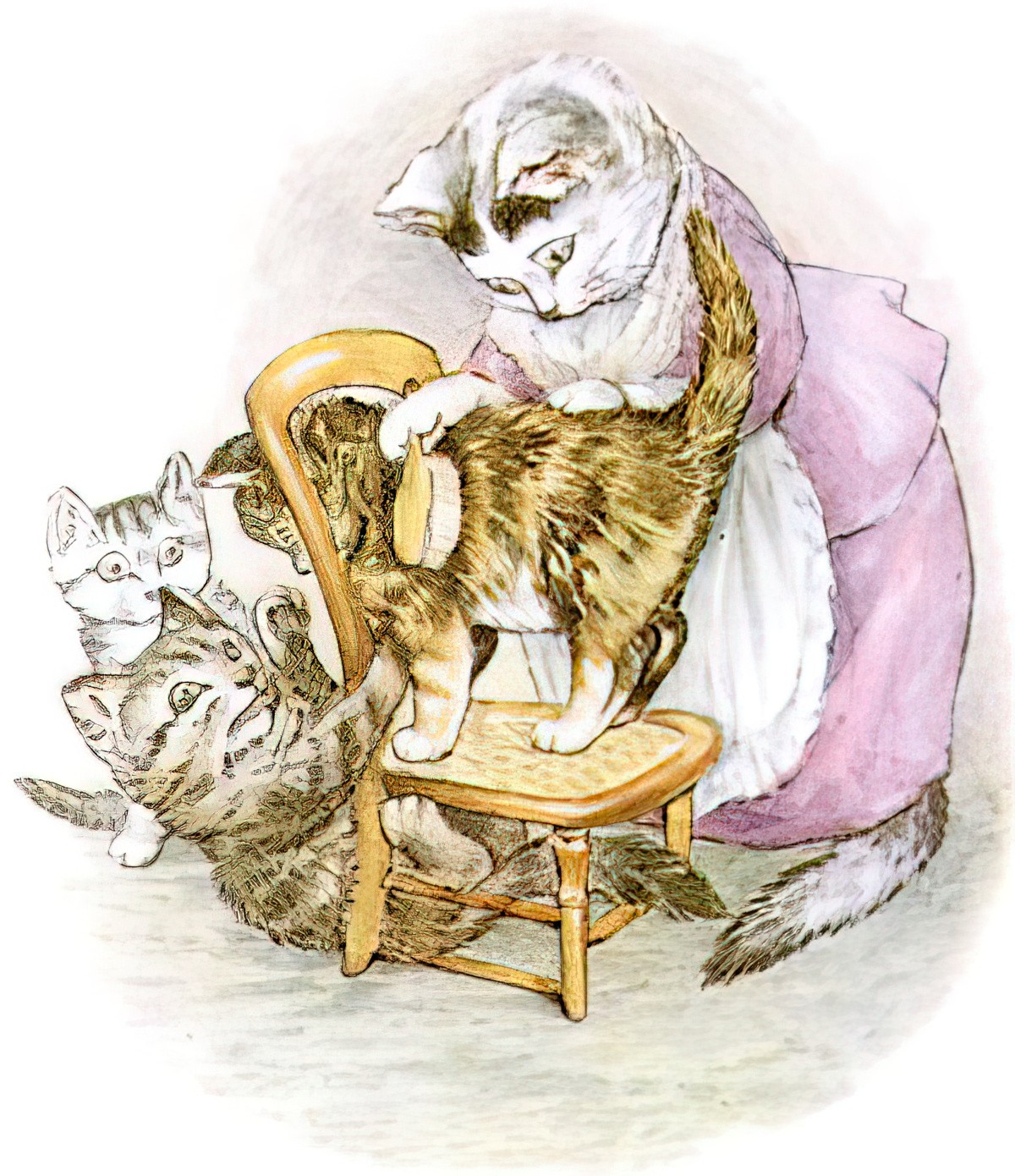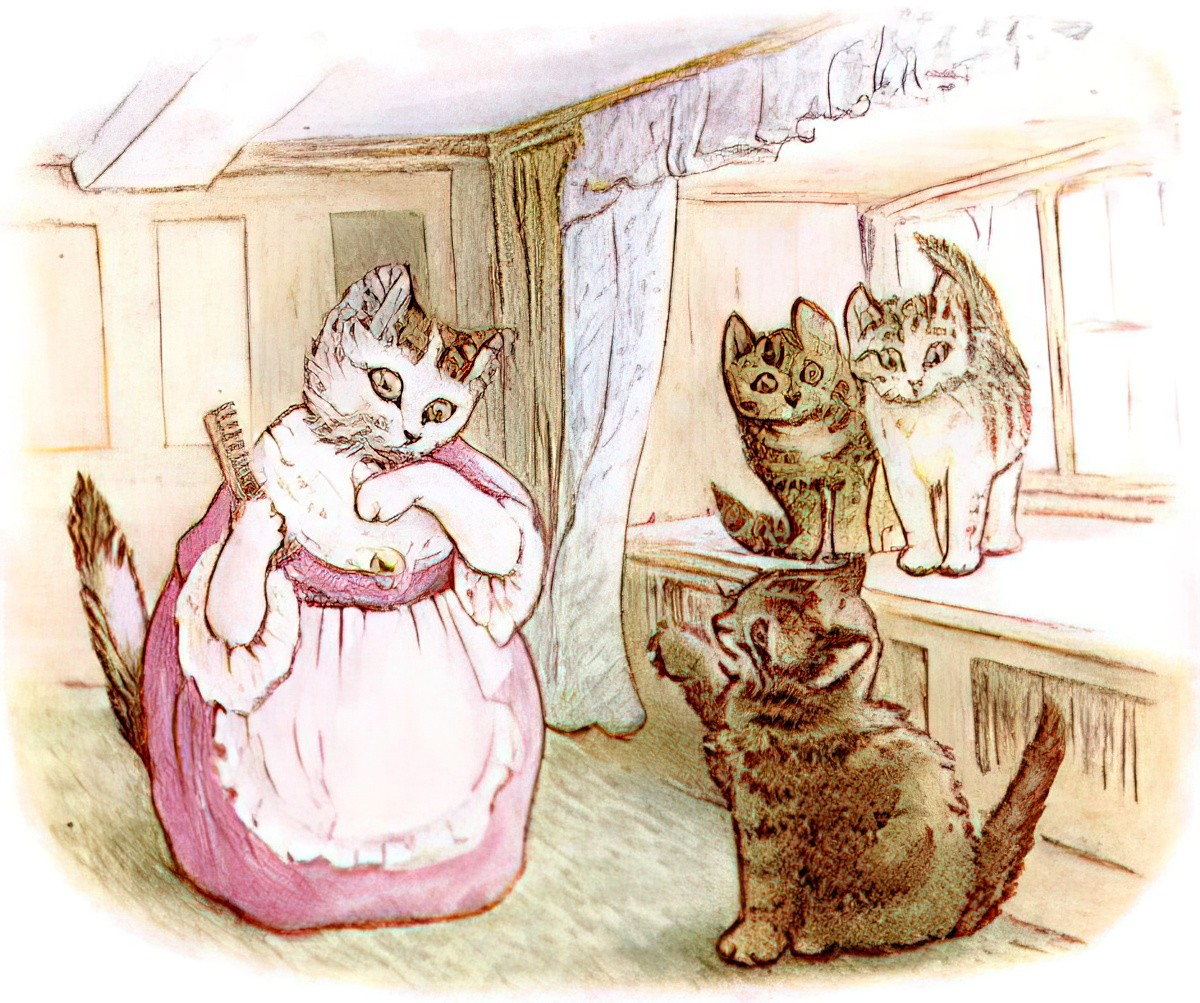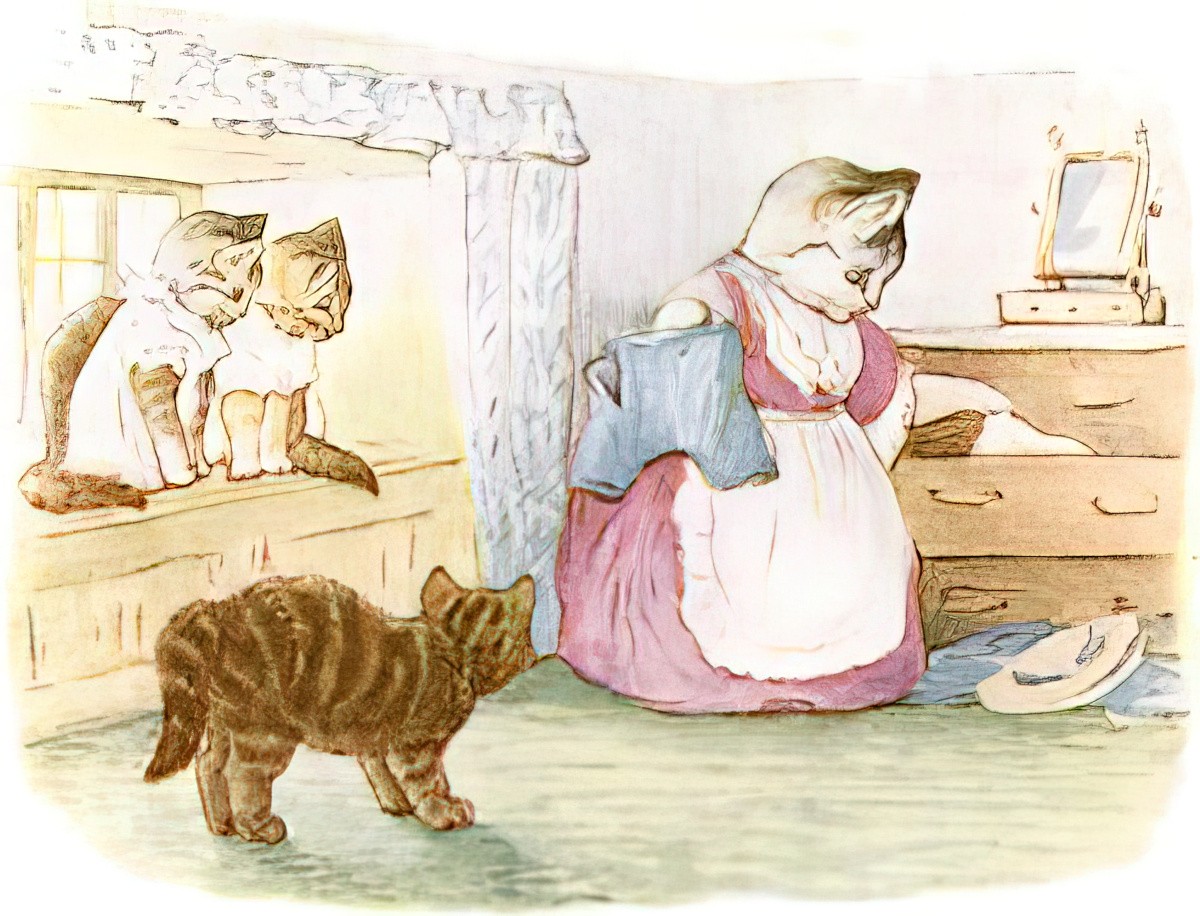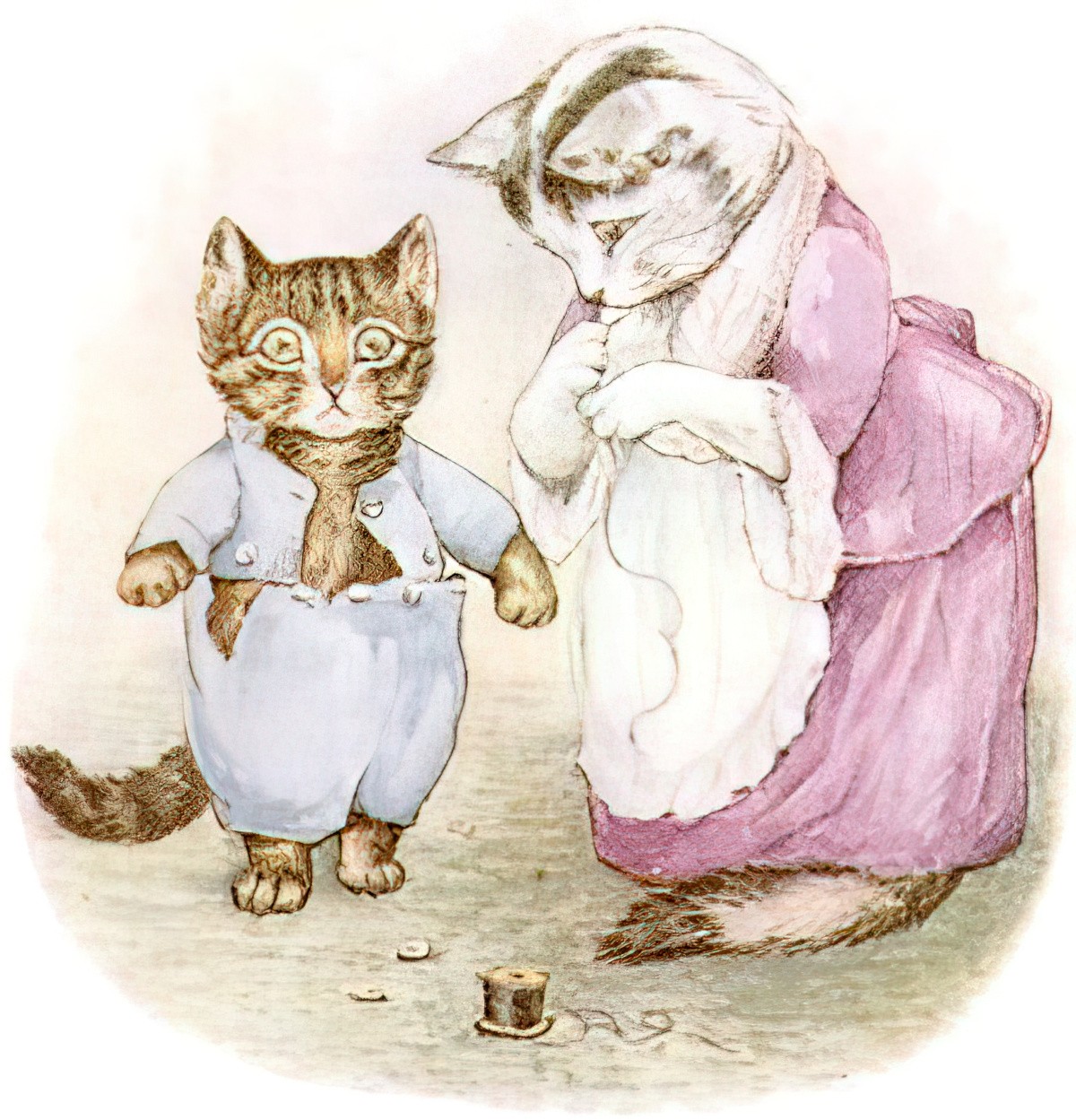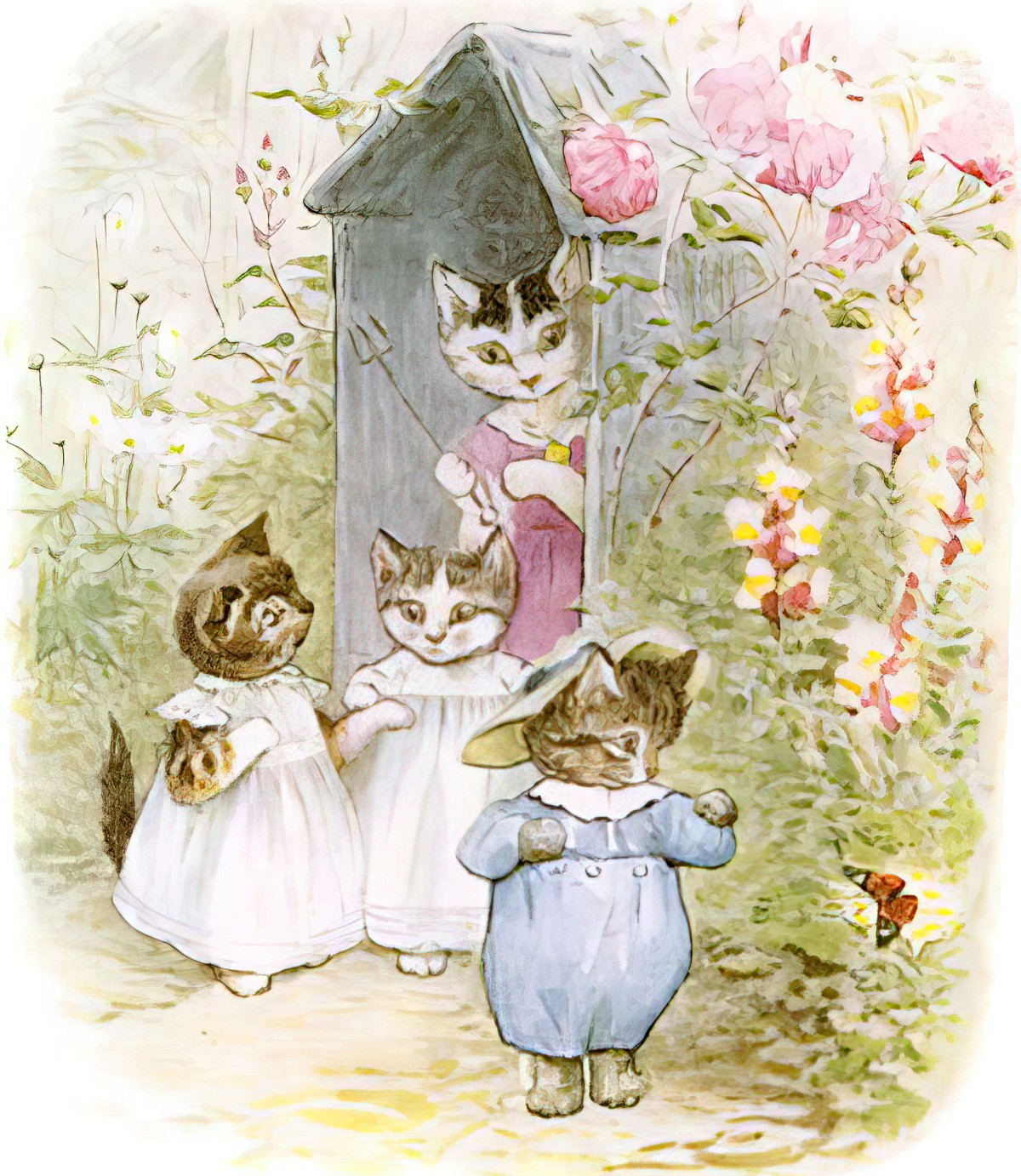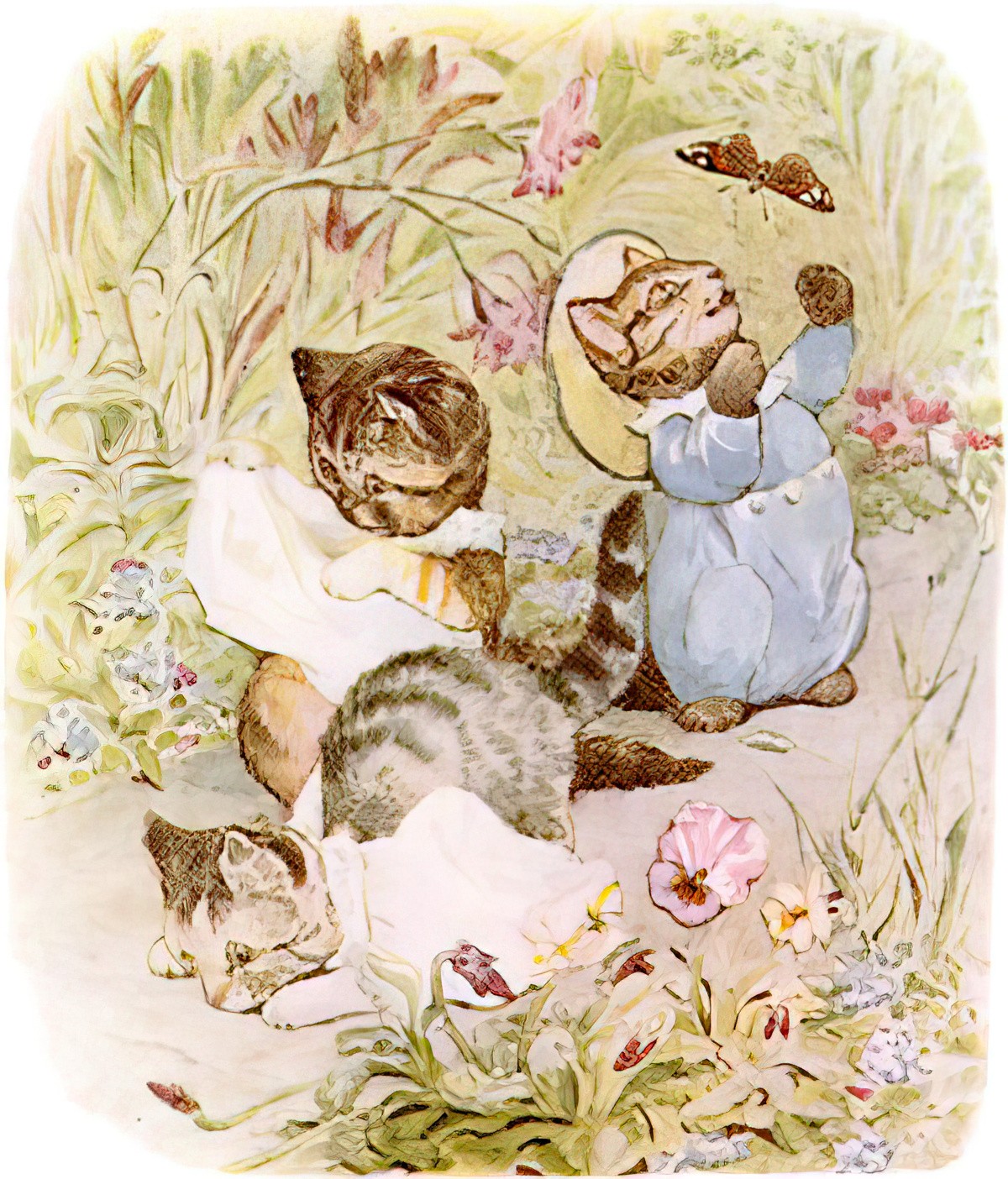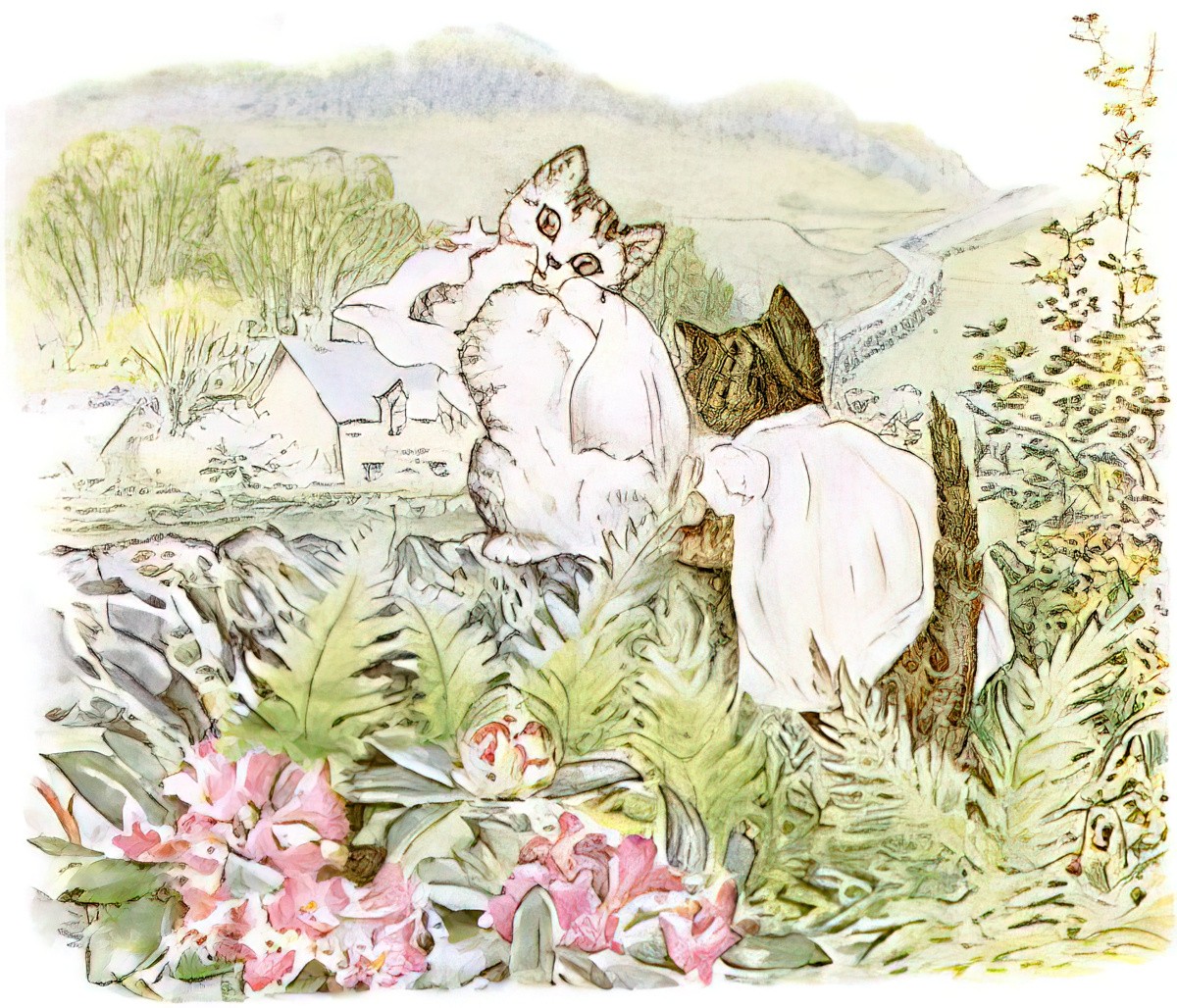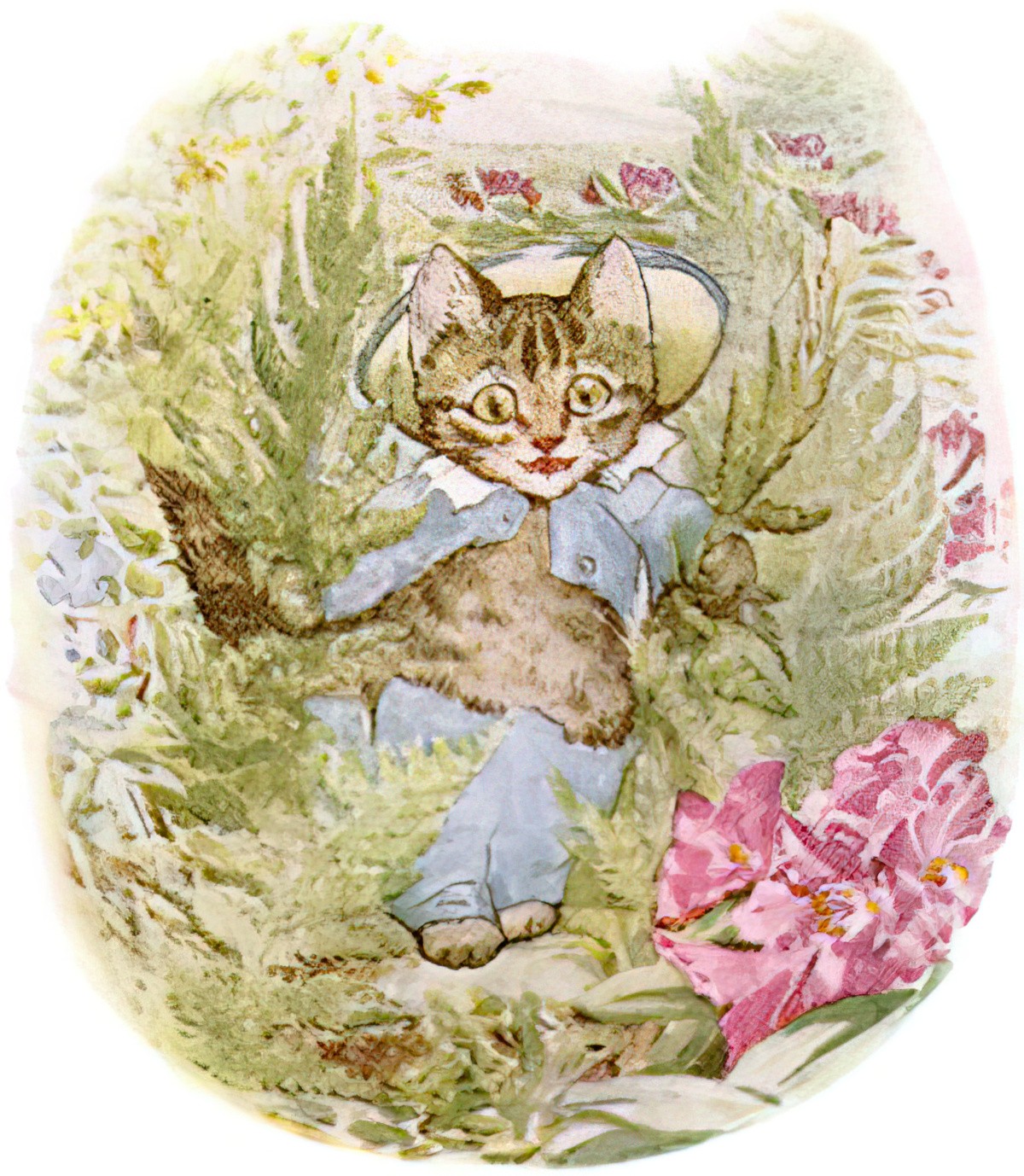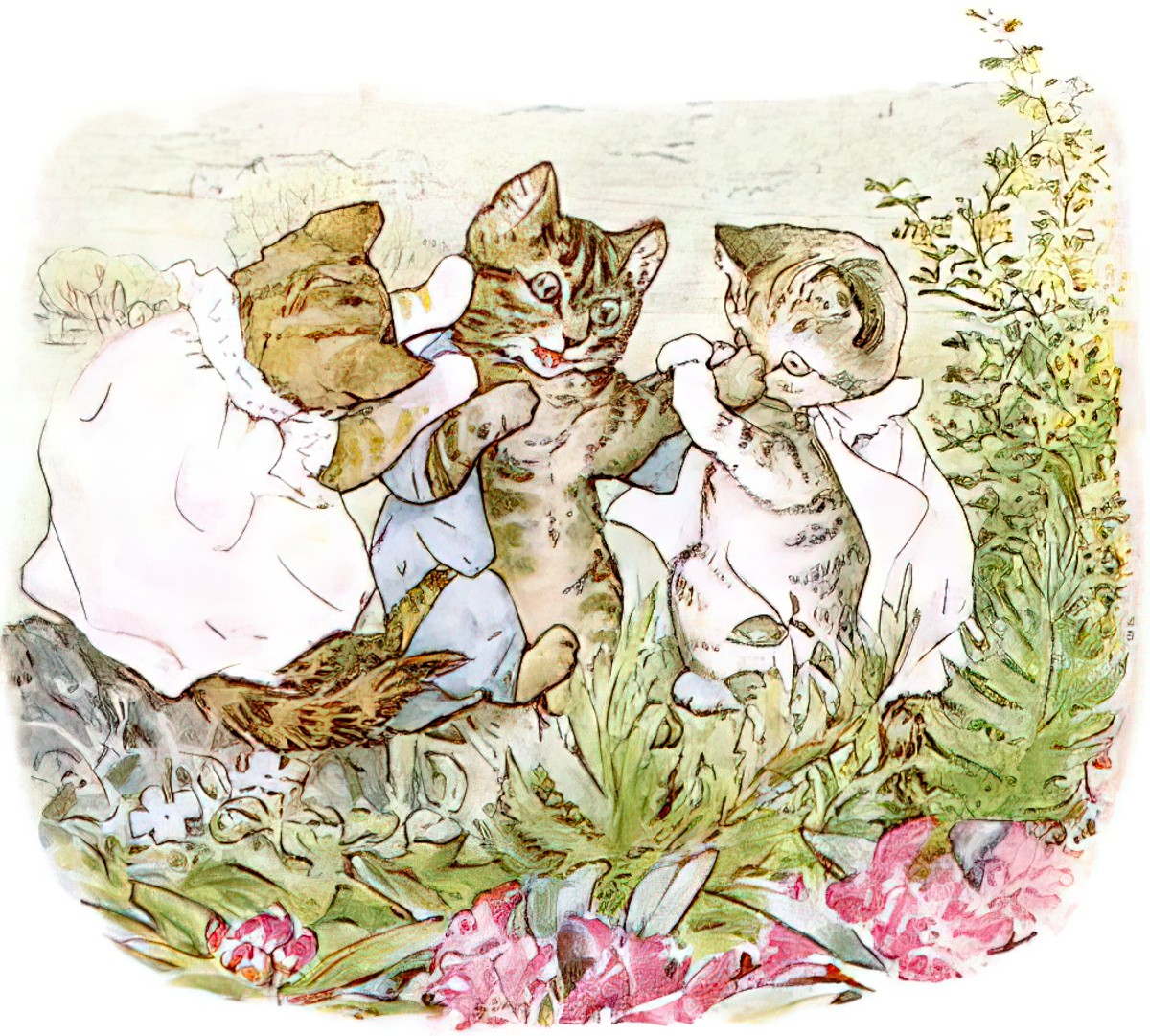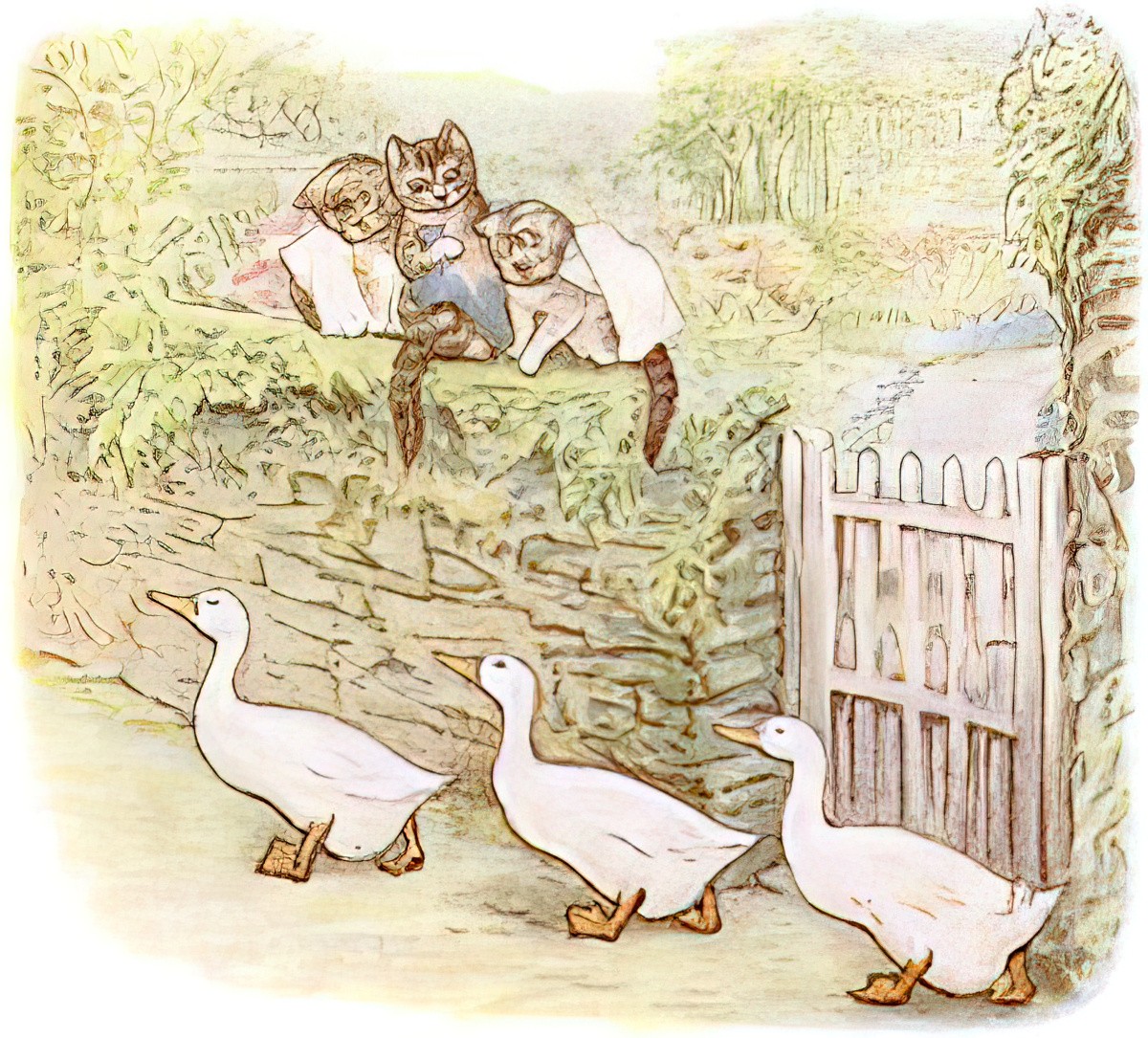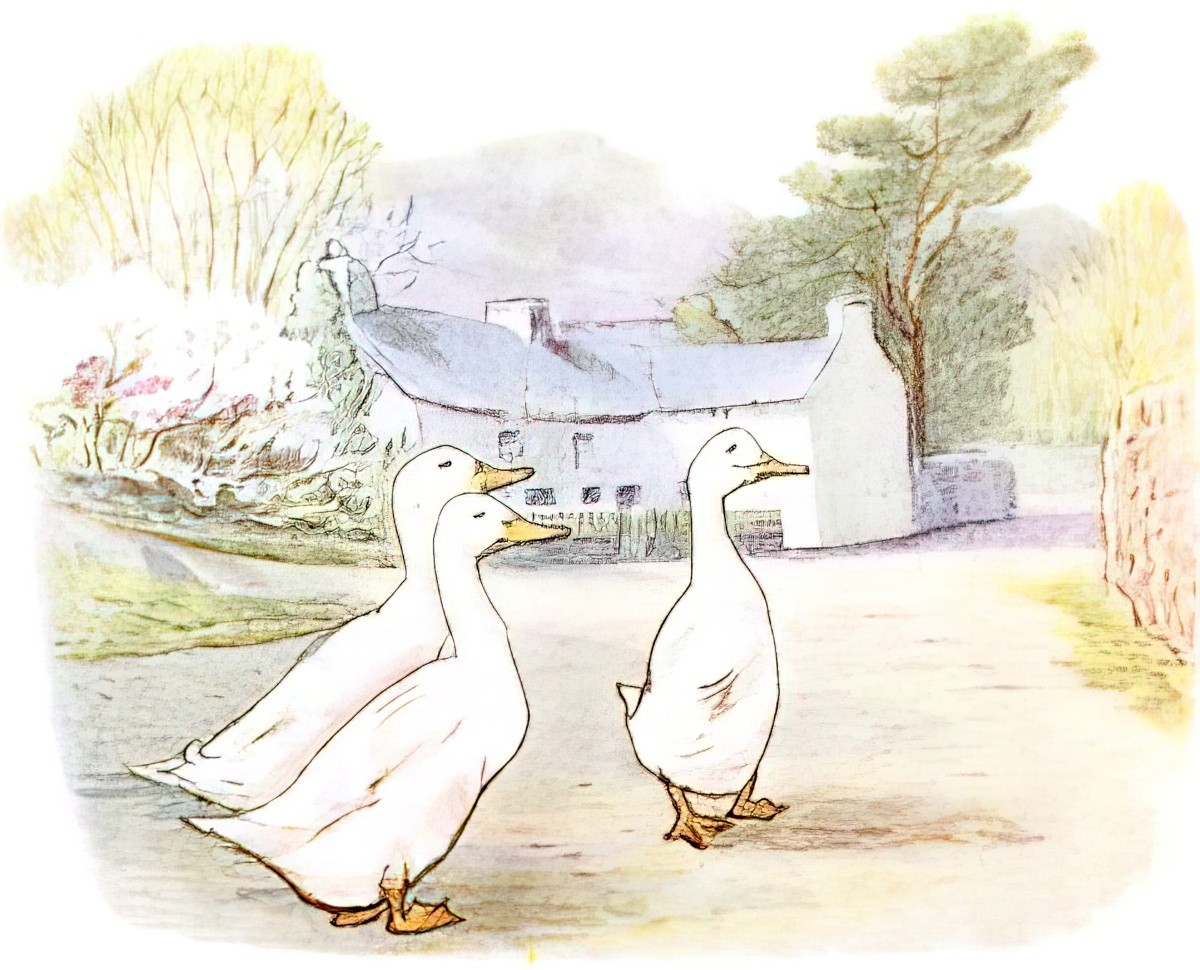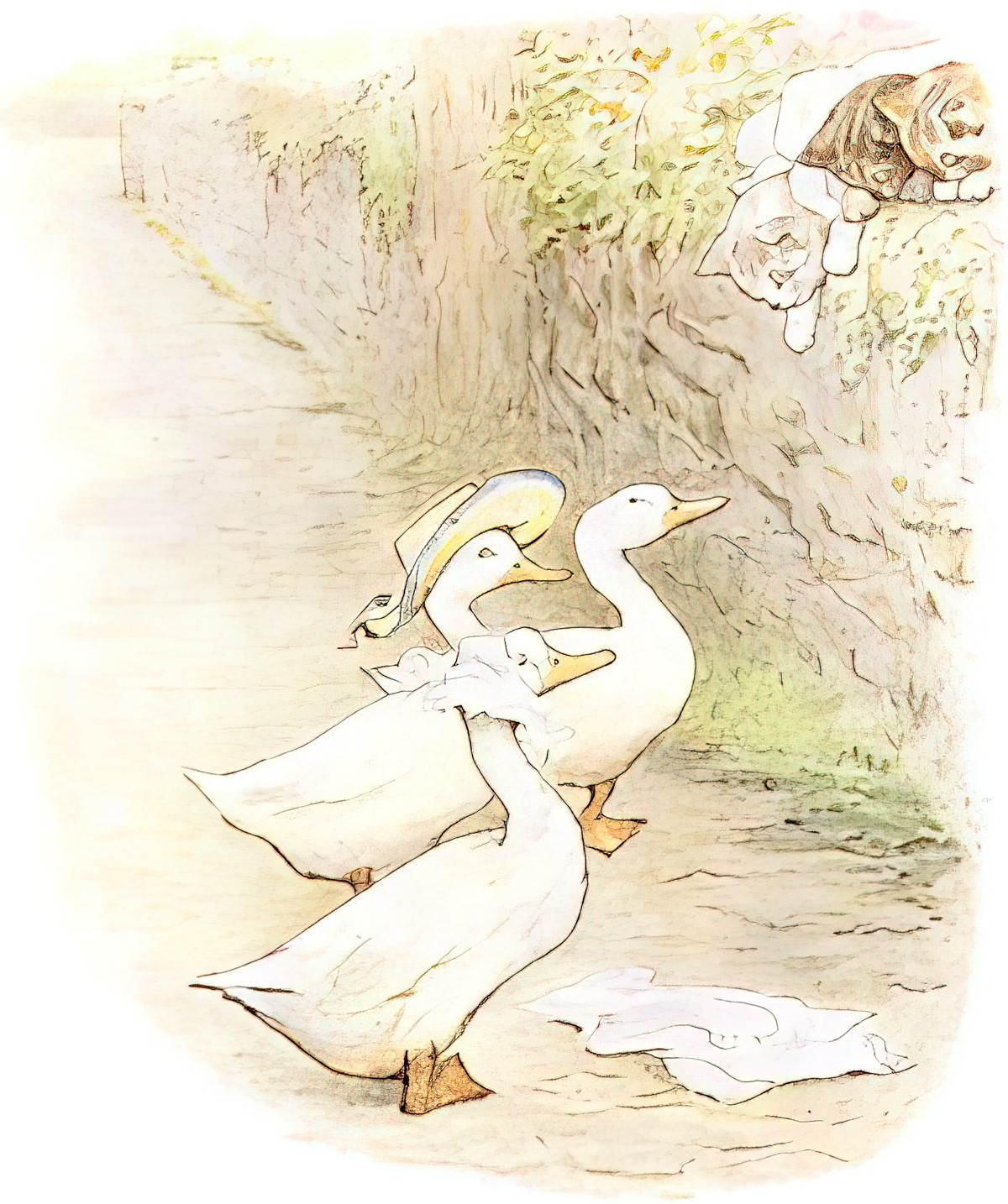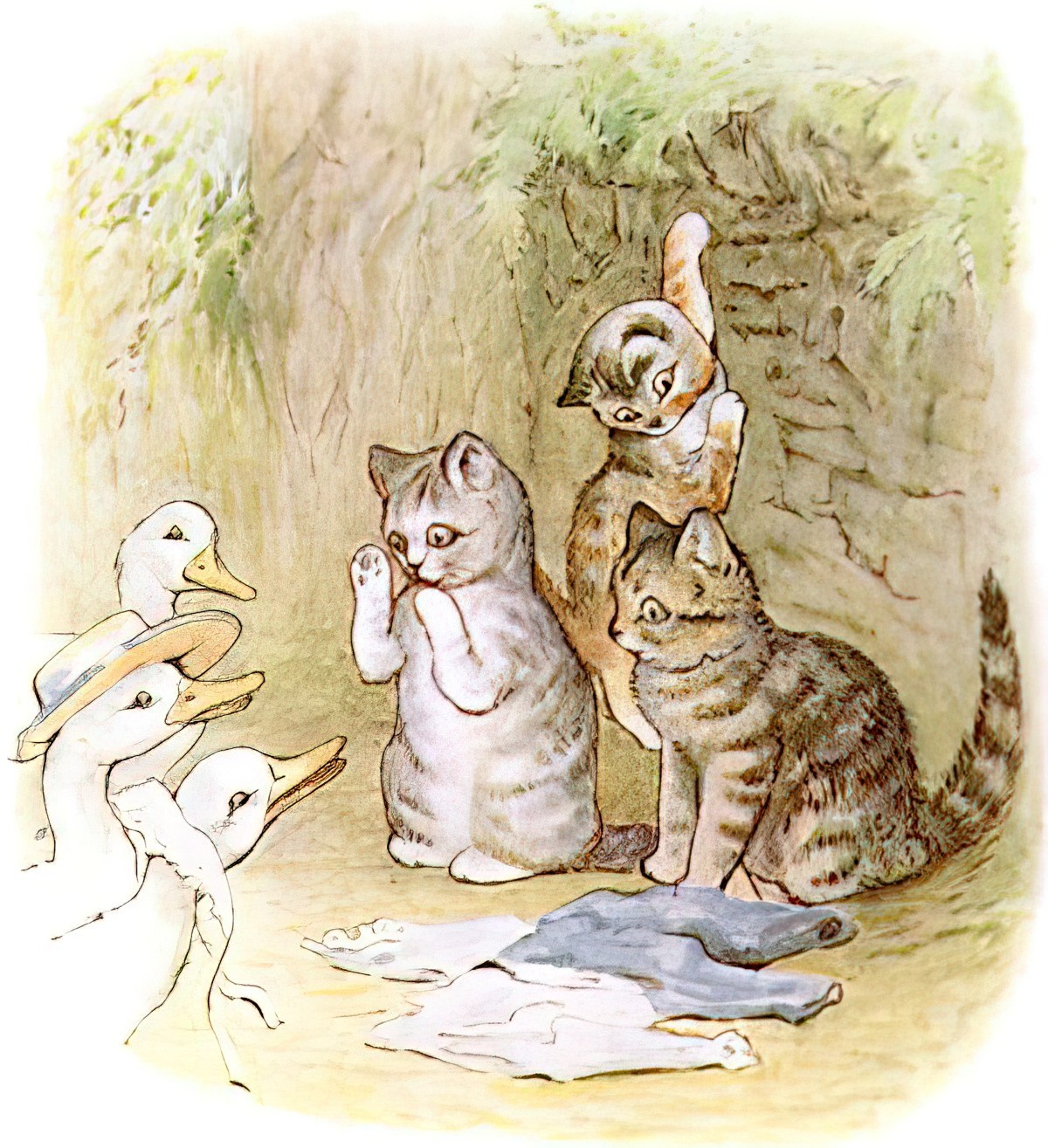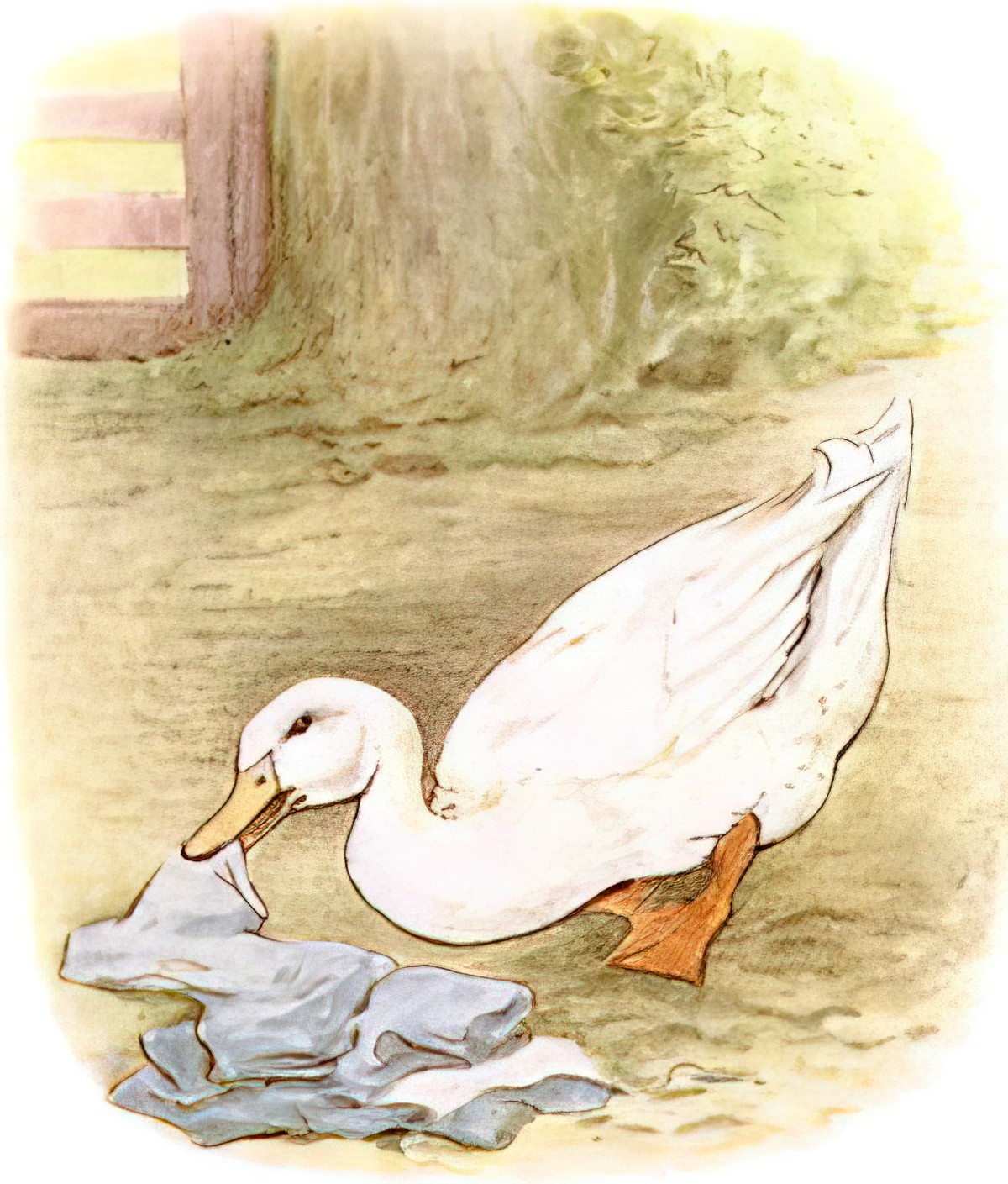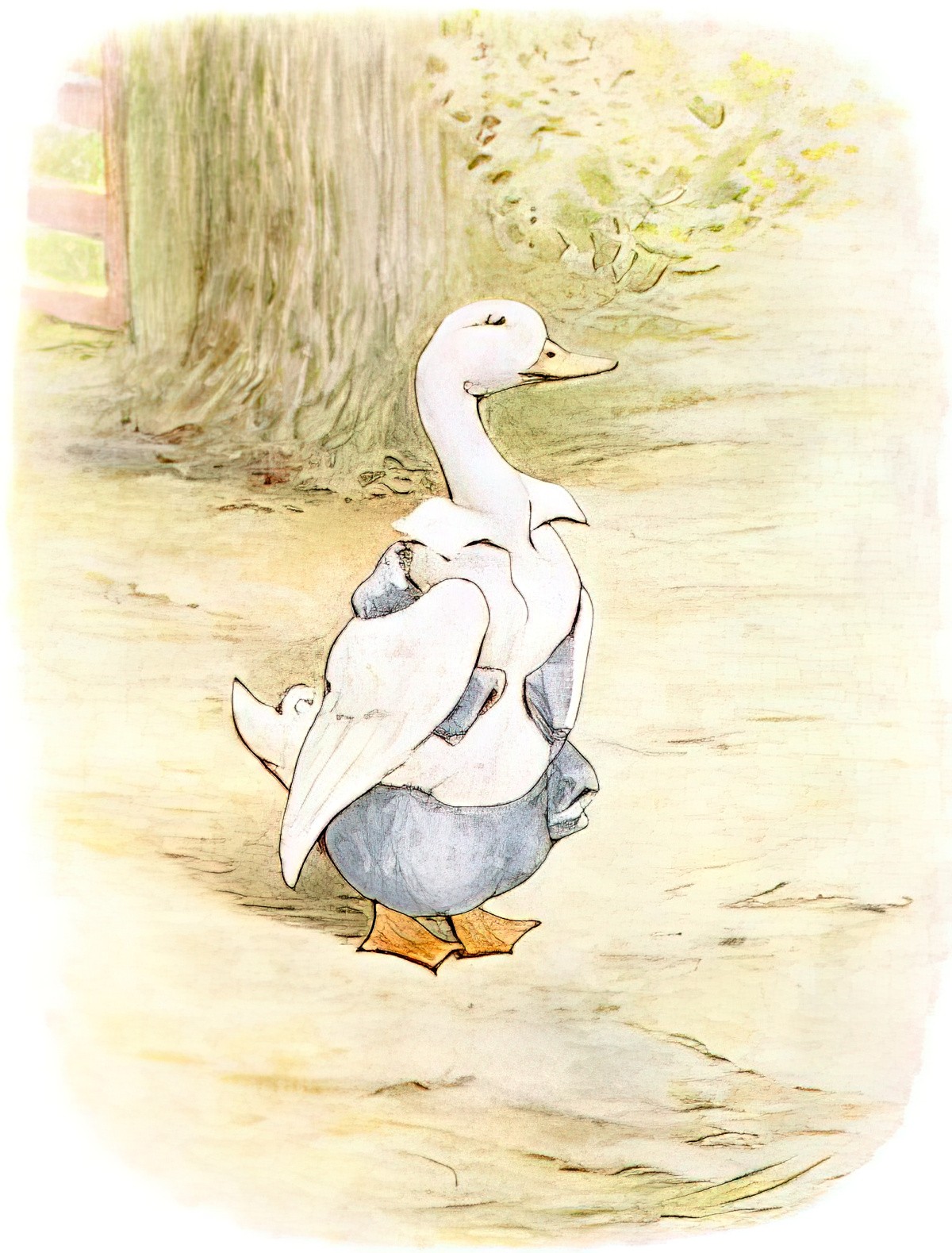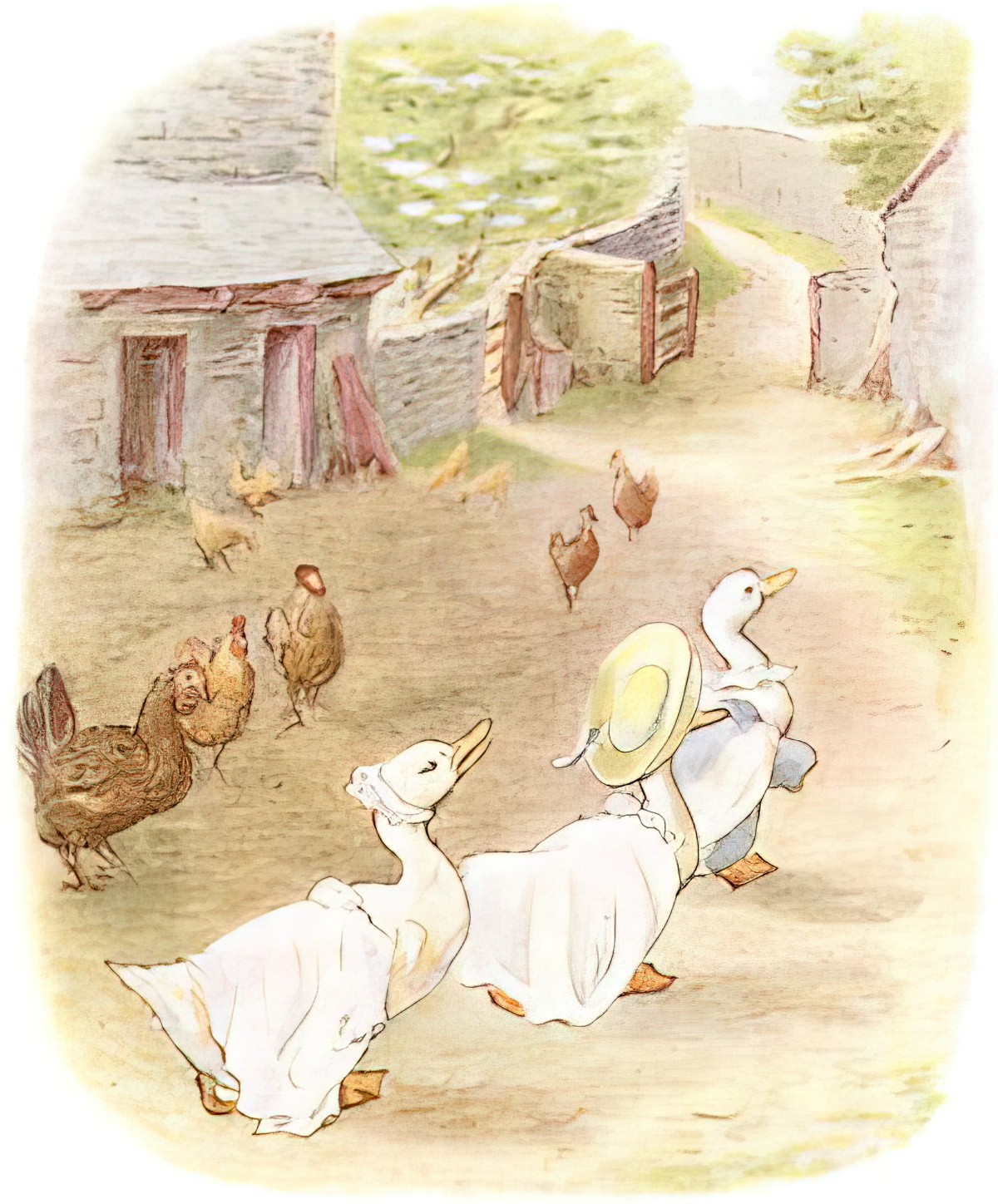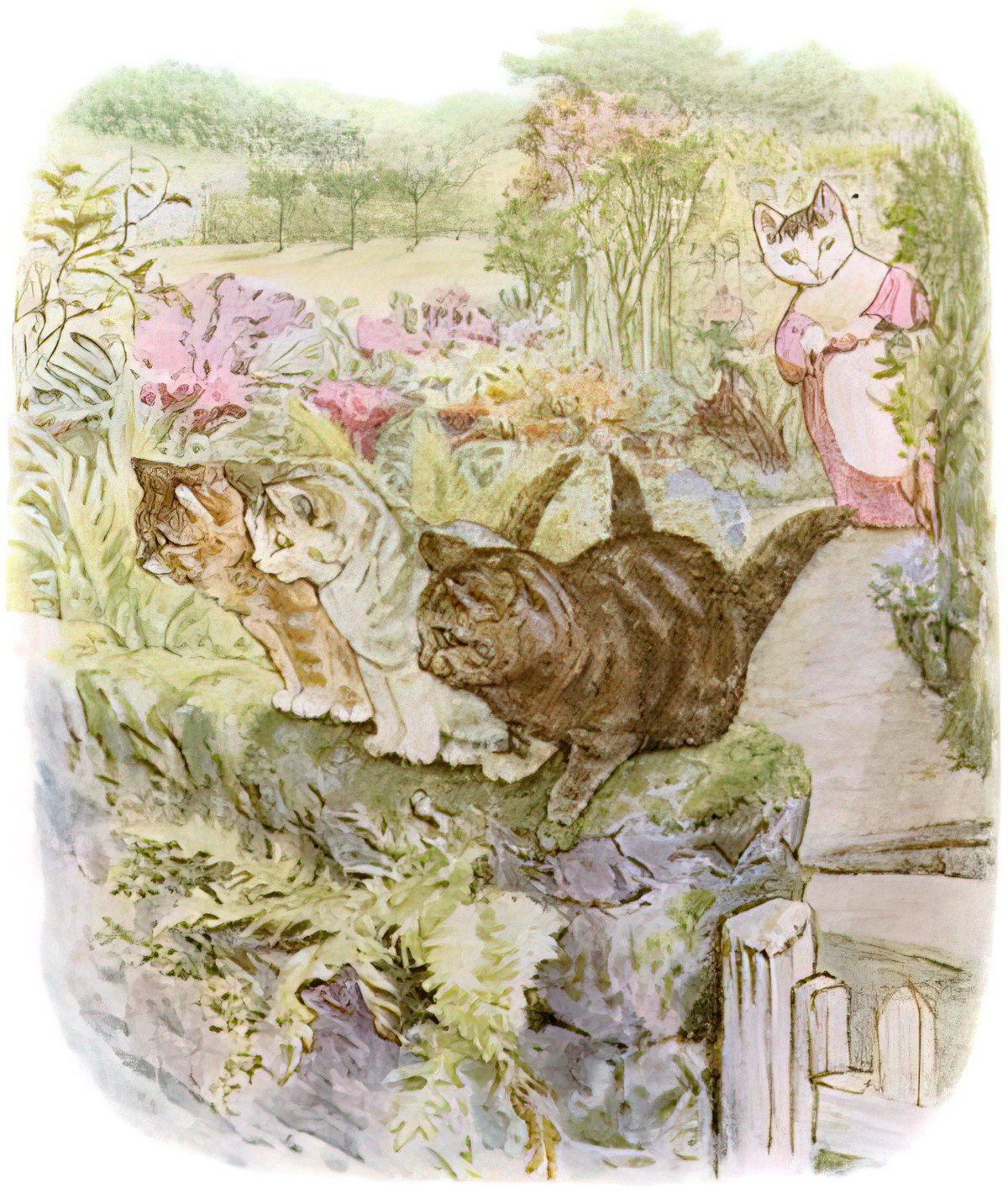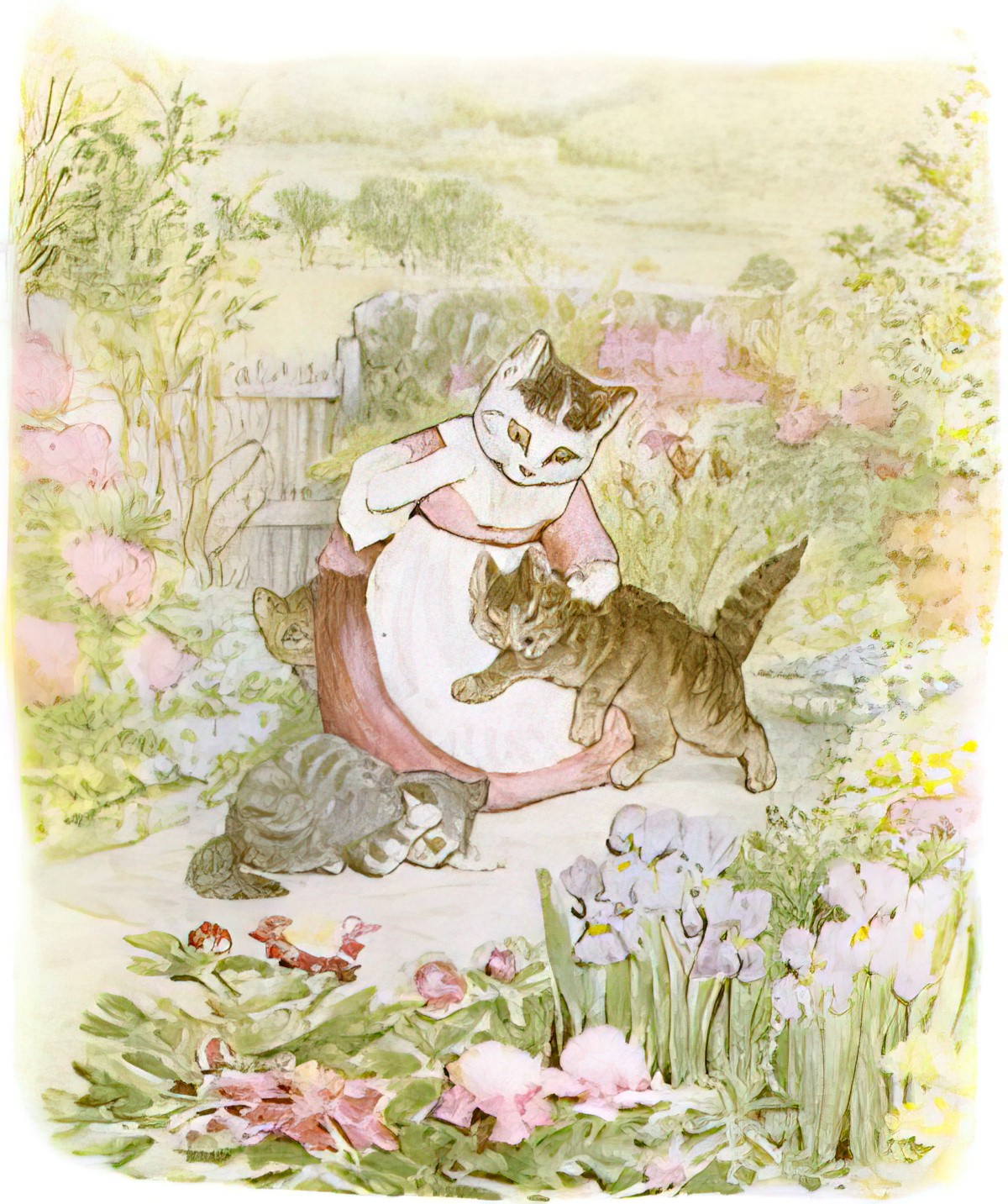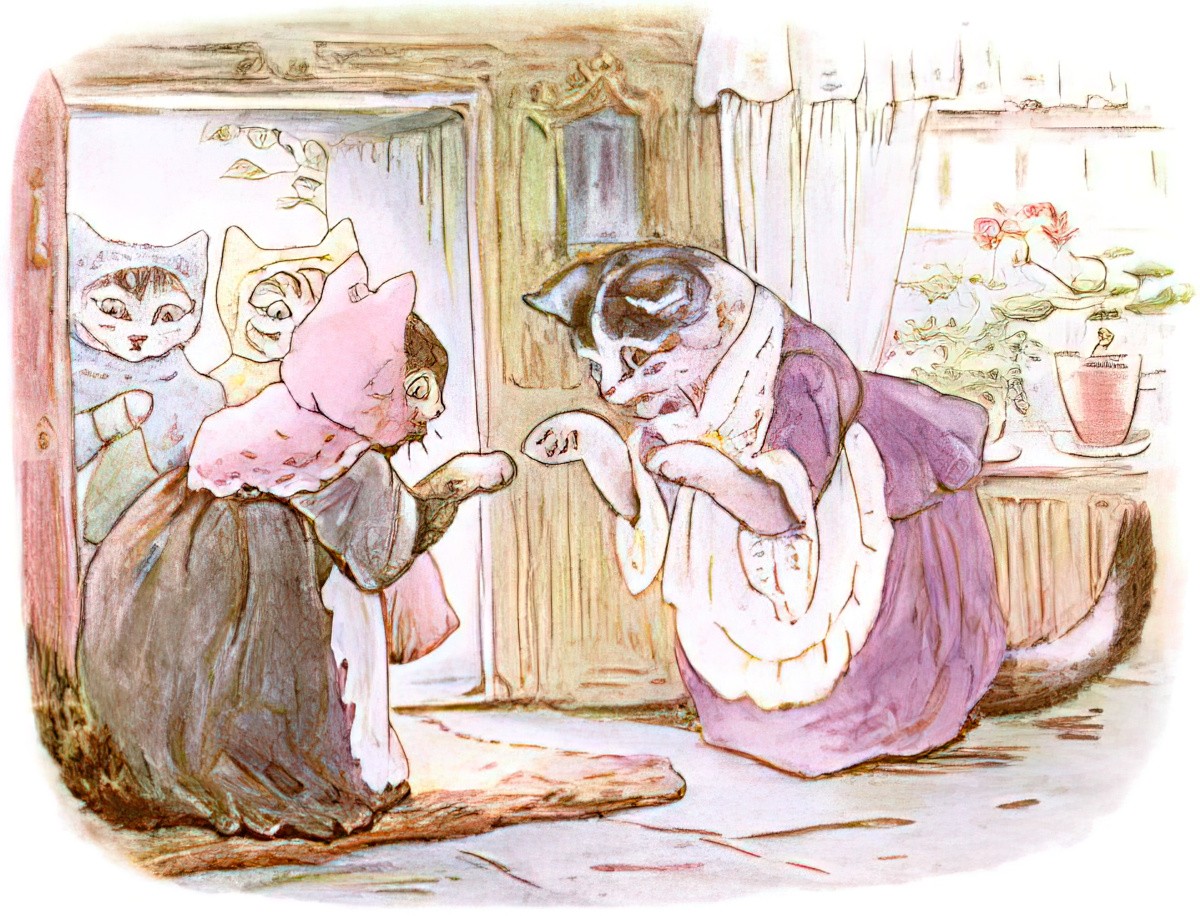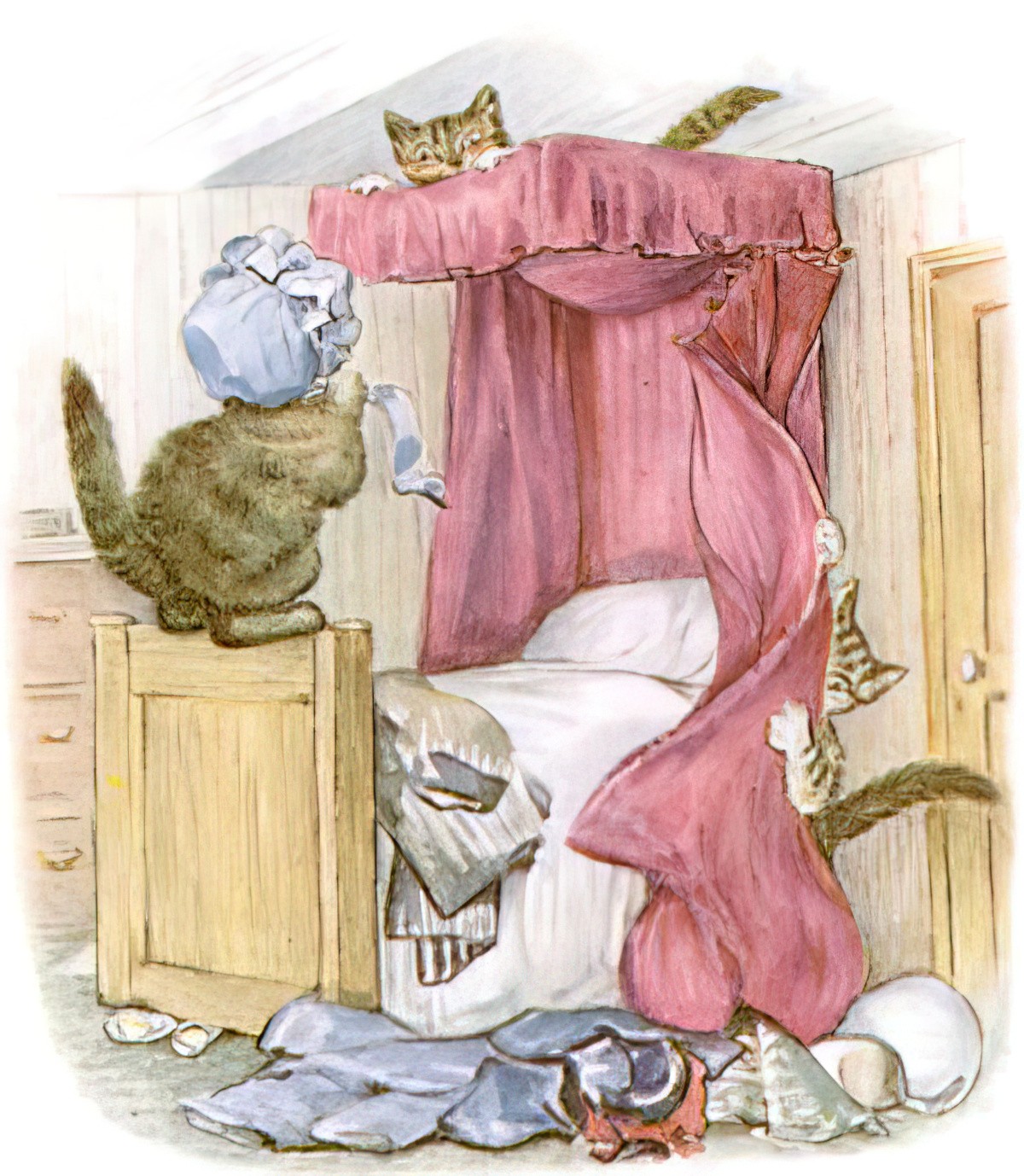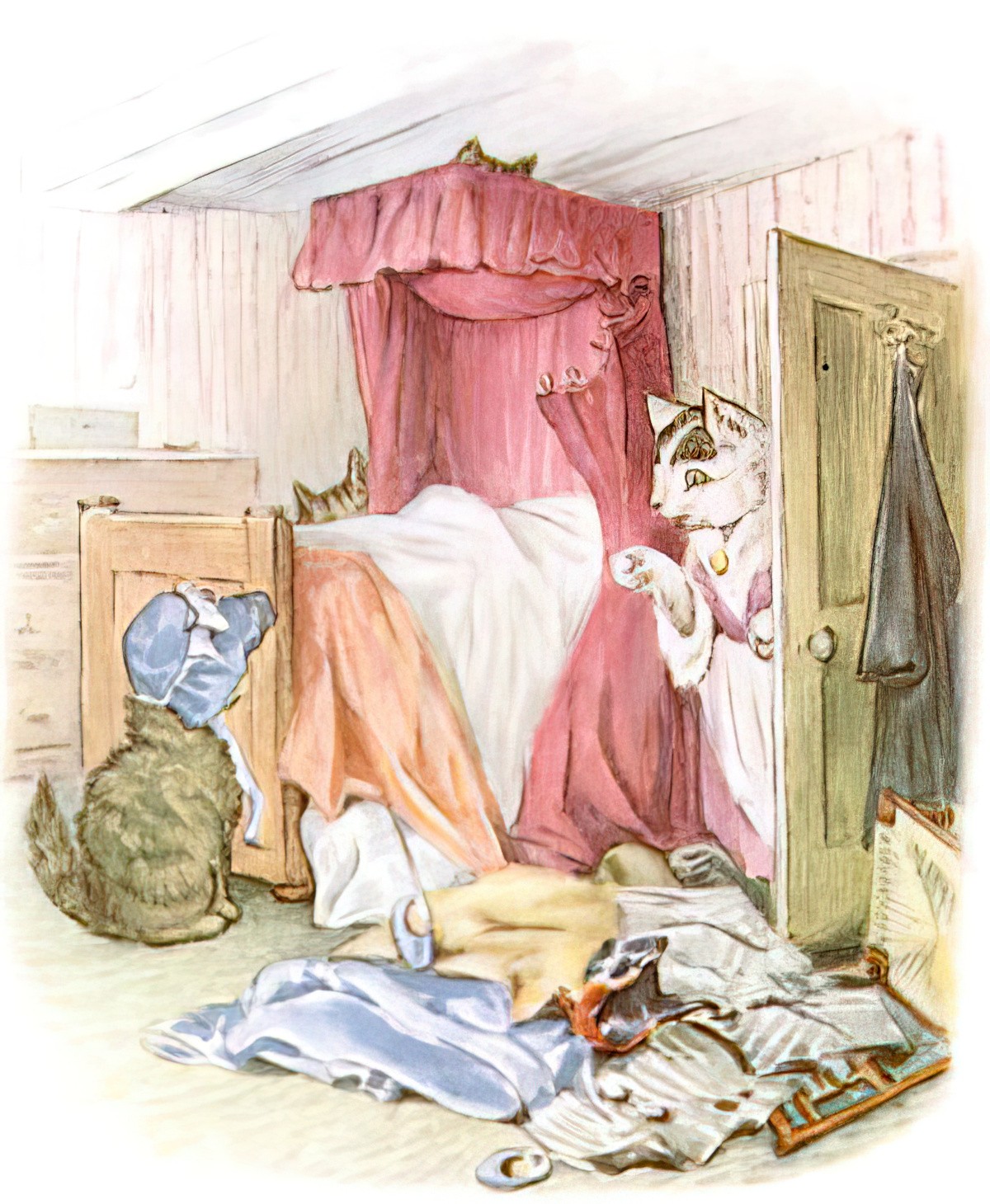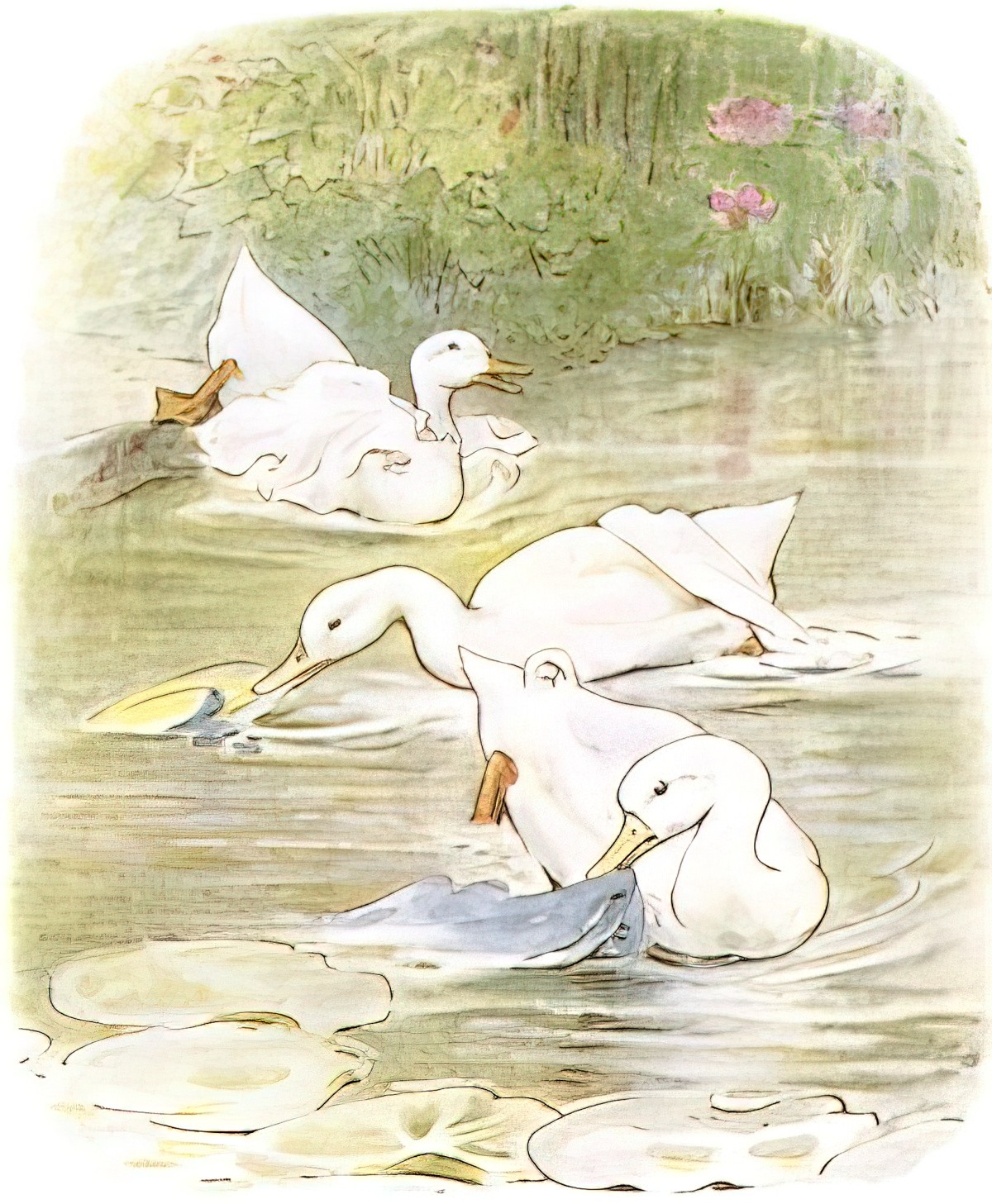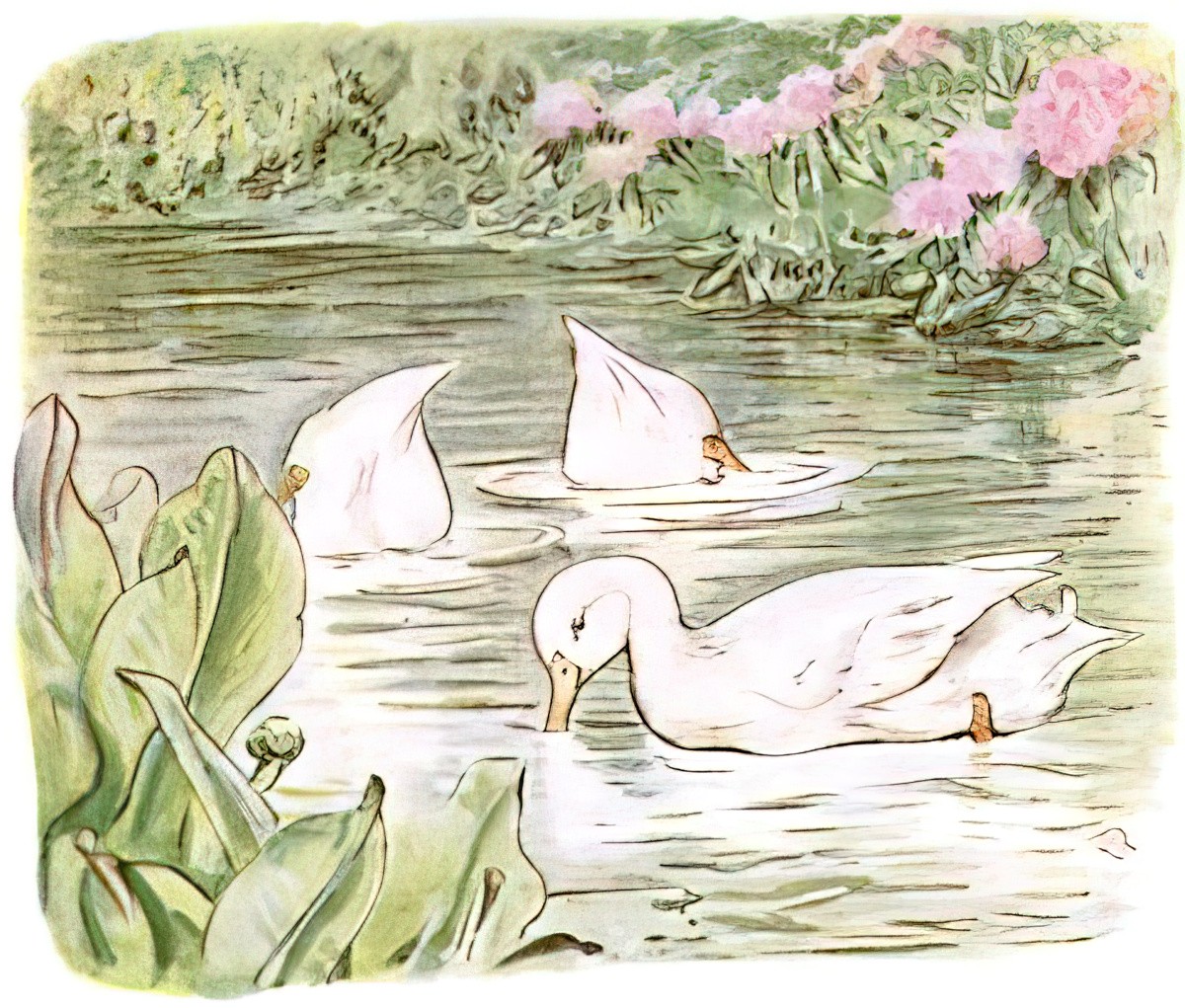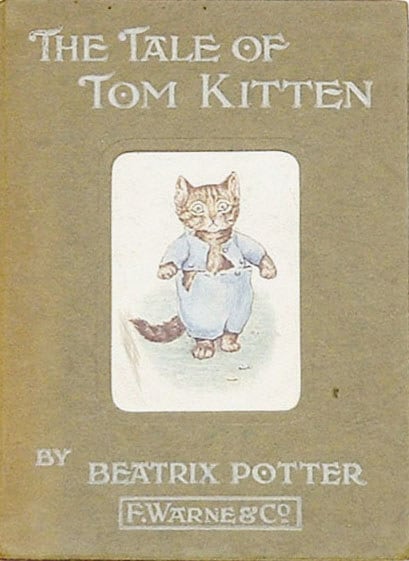The Tale of Tom Kitten was created soon after Beatrix Potter had moved into her farm in the Lake District, which she’d bought with the proceeds earned from The Tale of Peter Rabbit. The illustrations are recognisably of Hill Top and of the farmstead’s surrounding village. The cats of the illustrations were real cats who lived there.
It was Beatrix’s publisher Harold Warne who thought cats would make good characters for one of her picture books. His own daughter had a pet cat. It seems fluffy mammals are an easier sell. In contrast, Beatrix had a hard time selling the concept of Jeremy Fisher. She made the background illustrations particularly beguiling to compensate for the ick factor of the frog. Contemporary picture books are full of all sorts of lovable animals from every classification, but Beatrix Potter was paving the way and her publisher was testing the waters.
Although Potter succeeded in creating lovable frogs, and hedgehogs, her publisher was right about cats. Consumers do love cats. After the success of Tom Kitten, Warne was approached by a company who wanted to make a musical version.
Beatrix dismissed this idea as “considerable twaddle”.
Tourists to the Lake District can visit Hill Top, Potter’s seventeenth century farm house, known to fans as “Tom Kitten’s house”.
STORY STRUCTURE OF “TOM KITTEN”
The story starts off with the child characters constricted by the requirements of polite society, then evolves into an unsupervised carnivalesque adventure. the child characters end up back inside the home, though their freedom has not been fully curtailed — they will find a way to have fun.
SHORTCOMING
The Tale of Tom Kitten is equally the tale of Tom’s sisters, Mittens and Moppet. But Beatrix Potter did not subvert the stereotype that girl children are well-behaved while boy children are mischievous and interesting. It is Peter Rabbit who goes out on his adventure rather than one of his better-behaved sisters.
In a misogynistic pecking order where boys are at the top, Tom is affronted by his mother’s requirement to dress up for guests because dressing up and looking pretty is a girly thing to do.
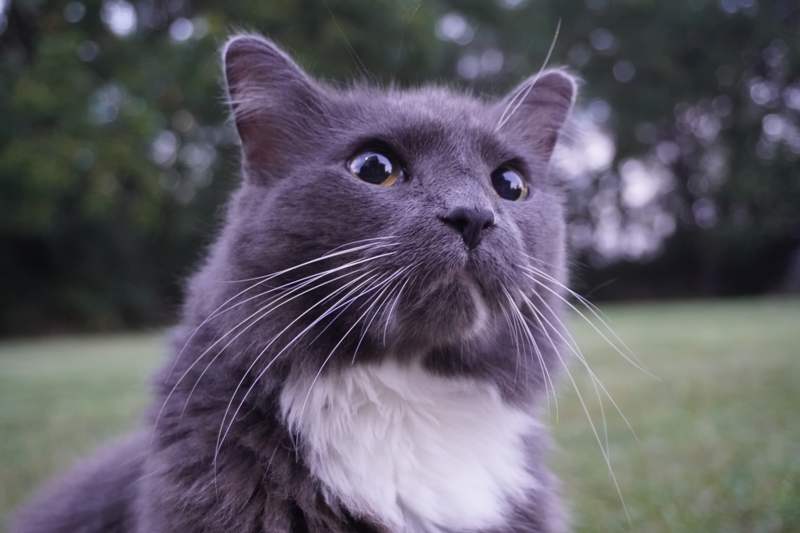
In different circumstances, Mittens and Moppet may be equally rebellious.
Indeed they are, though they appear docile while under the watchful eye of Mother. Beatrix Potter does eventually afford the sisters a little freedom at the end, where we see their true, playful natures. We might consider this a minor gender subversion.
DESIRE
In common with the childlike heroes of any carnivalesque tale, these kittens want to have fun. Their deeper psychologies remain unexplored, though we do get an insight into the insecurities of their mother.
OPPONENT
The Opponent is the adult character who wants to make the kittens behave like well-behaved little grown-ups — in this case the mother, Mrs. Tabitha Twitchit. Tabitha is overly-concerned about appearance. When her friends arrive for their fancy party she lies that the kittens have got measles and that’s why they’re in bed.
But for the adventure part of this story, Tabitha is out of the picture. She has turfed her children out of the house.
PLAN CARNIVALESQUE ADVENTURES
The kittens want to play without impediment so their clothes become dirty and dishevelled, then come completely off.
Beatrix Potter would have been familiar with the constricting nature of clothing. She lived in an era where women’s clothing was highly impractical, yet she’d just moved to a farm. It’s one thing to sit inside and paint while wearing Edwardian women’s clothing; it’s another to be doing farm work in it.
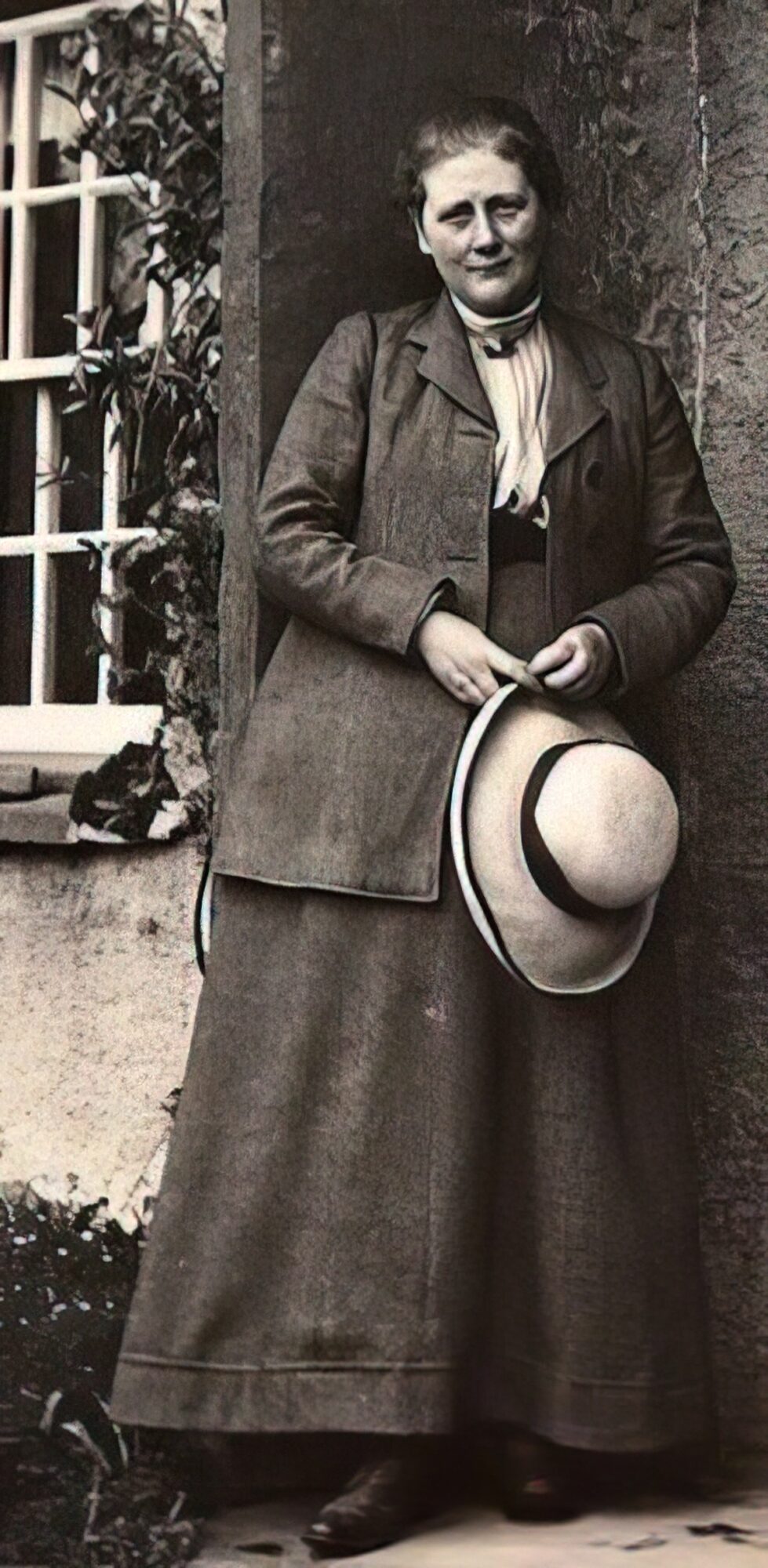
BIG STRUGGLE
The climax of these adventures involve ducks. Potter makes the most of the natural comedy of ducks. who are graceful on water but comical on land.
The ducks put on the kittens’ discarded clothes — hat on a dog humour. This sort of gag appeals to preschoolers in particular.
Why is it so funny that the ducks are wearing clothes, when we probably didn’t laugh at kittens wearing clothes?
Beatrix Potter anthropomorphised all of her animal characters, but they don’t all sit at the same place on an animal—human continuum. The cats are more human than the ducks are. Therefore it is more funny to see the ducks wearing human clothes.
ANAGNORISIS
In a carnivalesque tale there doesn’t tend to be a Anagnorisis at the end. The revelation comes earlier and it is always this: Having fun is fun!
NEW SITUATION
In many carnivalesque tales, the story ends with the child back to constricted normality but in this case Beatrix Potter affords the kittens some freedom to continue their fun.
Potter also tells us about the ducks — who she must consider an integral part of the cast. They lose the clothes in the pond and have been looking for them ever since. This is no doubt an etiological tale explaining why ducks are constantly putting their heads under the water.
